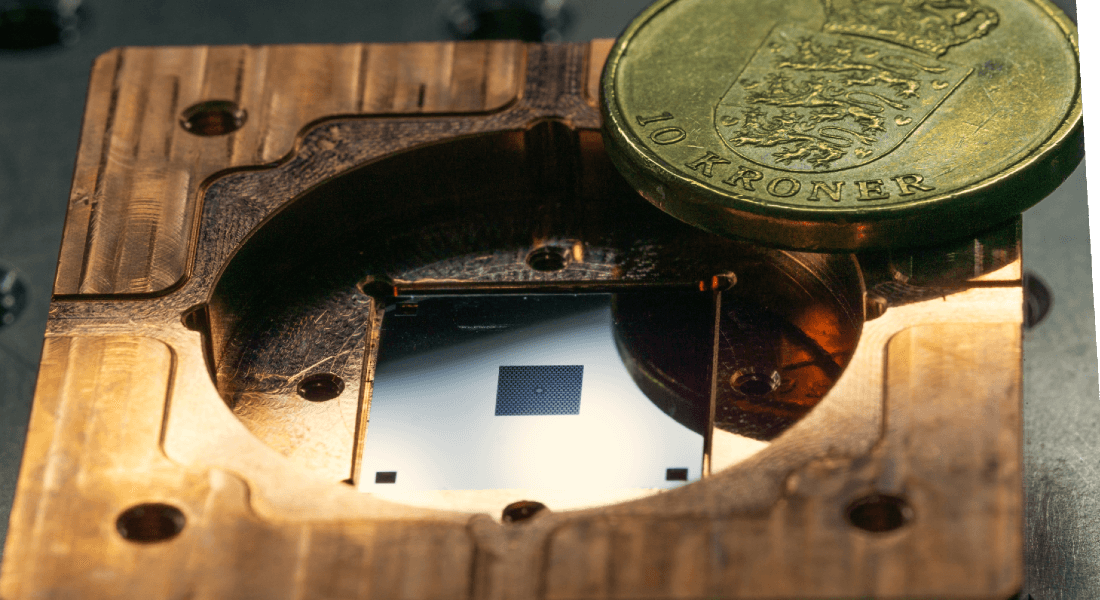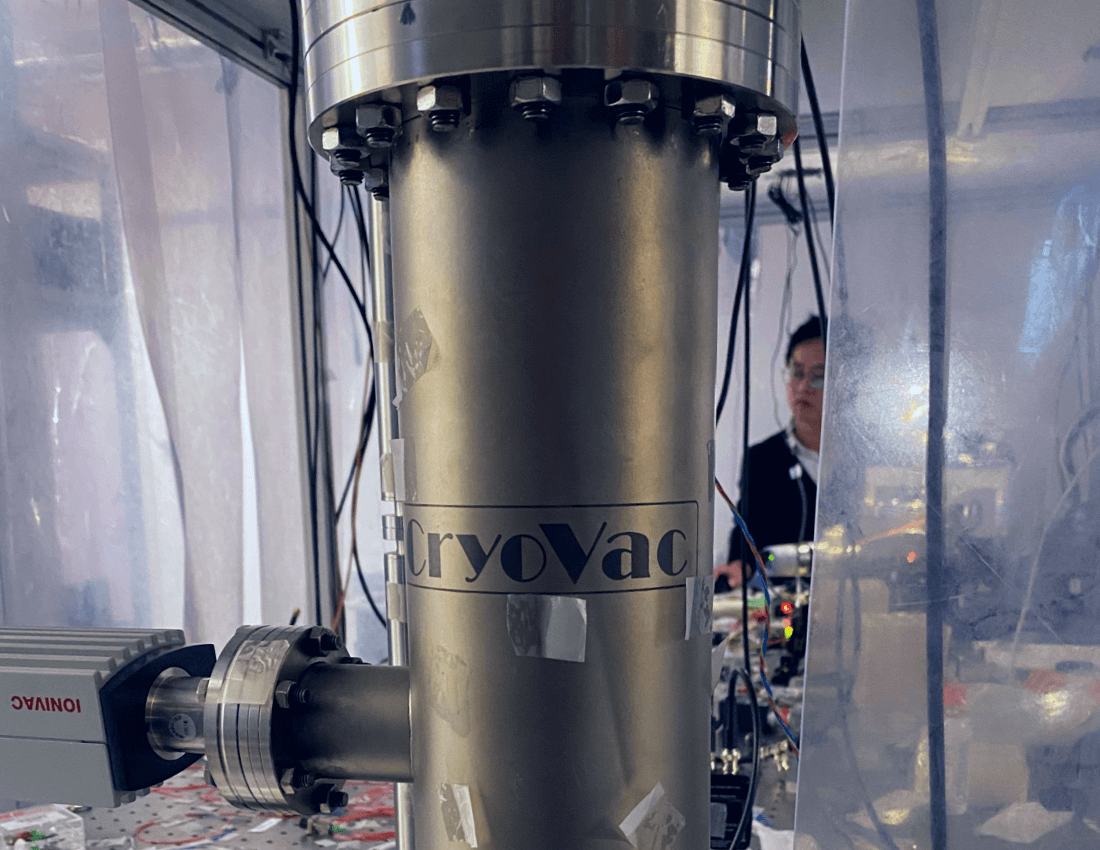Extreme measuring device can bring quantum technology to your smartphone
University of Copenhagen researchers have invented a “quantum drum” that can measure pressure, a gas leak, heat, magnetism and a host of other things with extreme precision. It can even scan the shape of a single virus. The invention has now been adapted to work at room temperature and may be finding its way into our phones.

Humans have tried to measure the world around them since ancient times. Now, researchers are using the laws of quantum physics to develop one of the most sensitive measuring devices the world has ever seen. One day, it may even be yours. With two innovative solutions, researchers at the Niels Bohr Institute have found a way to get quantum technology into our pockets.
The heart of the apparatus could be called a "quantum drum": It is a thin membrane that vibrates like a drum skin, but with so small an amplitude that the laws of quantum physics are needed to describe what’s happening. In other words, it’s vibrating really fast. This means the drum can be used as an ultra-precise measuring device – a quantum supersensor.
"The sensor is so sensitive that, in principle, we could measure whether a single person is hopping from one leg to the other in Paris. We would be able to capture it here, in our Copenhagen basement, from thousands of kilometers away. But, because it would require them to jump at 1.4 million vibrations per second, the example is best regarded as a thought experiment," laughs Professor Albert Schliesser from the Niels Bohr Institute, who heads the team behind the quantum sensor.
Thought experiments aside, the sensor is very real and has many possible uses. By reading changes in the vibrations with which the quantum drum moves, researchers can measure a wide variety of influences with extreme precision.
"“For example, a change in temperature or the presence of a gas will directly affect the way the drum vibrates, and it’s the same when we place a virus on the drum. A laser allows us to read the result accurately. But this is just the beginning," explains Professor Albert Schliesser:
“By putting small piece of metal, or a tiny magnet on the membrane, we can also detect electric and magnetic fields with extreme precision, “he says.
Innovation could make quantum sensors available to all
How much would you pay to have a quantum supersensor in your pocket?
This question was asked by the CEO of one of the world's largest technology companies as he visited the basement of the Niels Bohr Institute in Copenhagen, where Albert Schliesser and his research group work, - curious to find out more about the “quantum drum” developed by the group.
However, operating the membranes outside of a laboratory had been all but impossible, since reaching the quantum regime – and the extreme accuracy - required cooling with liquid helium to near absolute zero (around -250 C).
“Otherwise random shaking by the hot environment would drown out the measurements with noise, as room temperature always implies some jittery motion,” explains Albert Scliesser.
Helium cooling, though, is cumbersome, bulky and very costly - a show-stopper for many applications, especially widespread adoption in consumer devices.
But in their latest study, the researchers have now proven that they can combine a kind of shock absorber of their own invention and a special laser-cooling technique to achieve the extreme precision even at room temperature, that is, without helium cooling.
This means that the sensor can now be made small enough to be put in a chip. “It can be a very small setup. For example, the sensor could sit inside a vacuum system in a semiconductor processing plant and keep an eye on temperature and gas leaks,” says the researcher. In the future, it may even be possible to integrate the sensor in a consumer device like a smart phone.

As an MRI microscope, it could become a weapon against viruses
The researchers’ plans also seek new scientific horizons. Using two synchronized "drums" from Albert Schliesser's laboratory, research colleagues from Switzerland have already managed to image the surface of a single virus for the first time.
This was achieved by scanning an ultrasharp needle over the virus and measuring the force between the virus and the needle using the drum.
Now, Albert Schliesser and his colleagues are exploring the possibility to measure magnetic forces exerted by spins inside a virus.
The basic idea is similar to that of hospital scanners producing detailed Magnetic Resonance Images (MRI) of our bodies - just at a dramatically smaller scale. This could lead to a new powerful tool in understanding and combatting viruses.
"We are now working to make it possible to image microscopic things like viruses, in the same way that an MRI scanner would. This would offer a new tool in the health sciences, which among other things, look into new viruses and see what proteins they contain," says Albert Schliesser.
Contact
Albert Schliesser
Professor in Quantum Optics
Centre for Hybrid Quantum Networks and Niels Bohr Institute, University of Copenhagen
+45 35 32 54 01
albert.schliesser@nbi.dk
Kristian Bjørn-Hansen
Journalist and Press Contact
Faculty of Science
University of Copenhagen
+45 93 51 60 02
kbh@science.ku.dk
